|
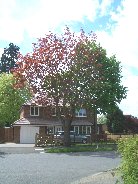
|
Friendship
Tree
Eastwick
Park Avenue
|
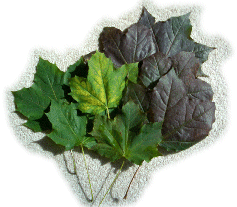 |
|
|
On the 1st October 2005 an unveiling ceremony of a plaque
took place outside 5 Eastwick Park Avenue and the wording
reads as follows: - The Royal Canadian Engineers planted this
friendship tree, a red leafed maple representing Canada and
a green leafed maple representing Great Britain in the grounds
of Southey Hall whilst they were based in Bookham during the
second world war (1939-45) - commemorated by The Bookhams
Residents Association - 2005. |
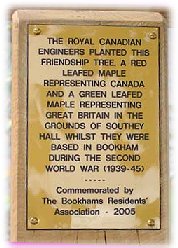
|
|
|
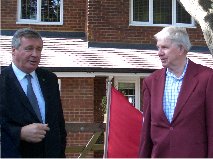
|
There was a sizeable gathering including our MP, Sir Paul
Beresford, and a number of our Councillors, together with
a few people who had had relations serving with the Royal
Canadian Engineers. Our Chairman, Peter Seaward, opened the
proceedings and mentioned that the tree would have been planted
adjacent to the drive leading to Southey Hall (previously
known as Eastwick House - now demolished) and the gates of
which can still be seen outside No. 182a Lower Road. Apparently
the tree would have been near to the guardhouse at the entrance
to the camp with a large tank park on the opposite side of
Eastwick Park Avenue.
|
|
|
Ron Smith, a local historian, was very helpful when we were
researching the subject and he very kindly agreed to unveil
the plaque. However, before doing so, he gave the gathering
a most interesting talk about his boyhood memories whilst
he was billeted at Bookham during the war years, which including
an unsolved mystery. 'D-Day' on 6th June 1944 was the largest
sea invasion that has ever taken place involving over 5,000
ships and 200,000 vehicles. The whole success of this invasion
depended upon absolute secrecy, especially the location of
the landing beaches. MI5 were horrified to find that answers
to the Daily Telegraph crosswords for the weeks before D-Day
included not only the code words for the beaches but the secret
words 'Mulberry', 'Neptune' and 'Overlord'. The writer of
the crossword, who was arrested, was the headmaster of a London
School evacuated to Effingham, with the pupils billeted in
Bookham and Fetcham. These villages were the camps for the
Canadian Engineers waiting to embark for D-Day, during which
time they built the Leatherhead by-pass, called Young Street
named after their commanding officer. How did the secret words
get into the crosswords? Did the Canadians leak words to the
schoolboys or was it all a coincidence? Being a coincidence
is very unlikely as in 1942, when the Canadians unsuccessfully
raided Dieppe, with 800 killed, the word Dieppe had occurred
in the Daily Telegraph crossword the week before.
|
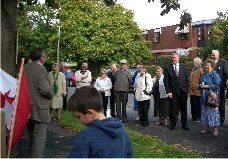
|
|
|
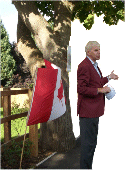
|
After the war, in gratitude to the hospitality shown to the
Canadians locally, they presented the friendship tree to Bookham
and also one to Leatherhead at Thorncroft Manor. The tree
can be viewed at any time but the marked colour difference
of the leaves can best be seen in the spring. At the bottom
of Young Street there is a memorial to the Canadians, and
at the top a memorial to 50 years' of peace.
|
|
|
|
October
2005 |
|
You can read more
about the 'D-Day Crossword' at the Bookhams Bulletin website:
http://www.bookhamsbulletin.co.uk/OldArticles/DDayCrossword.htm
My heartfelt thanks
to the Bookham Residents Association for allowing me to use this page
from their website: www.bookhamresidents.org.uk
|





